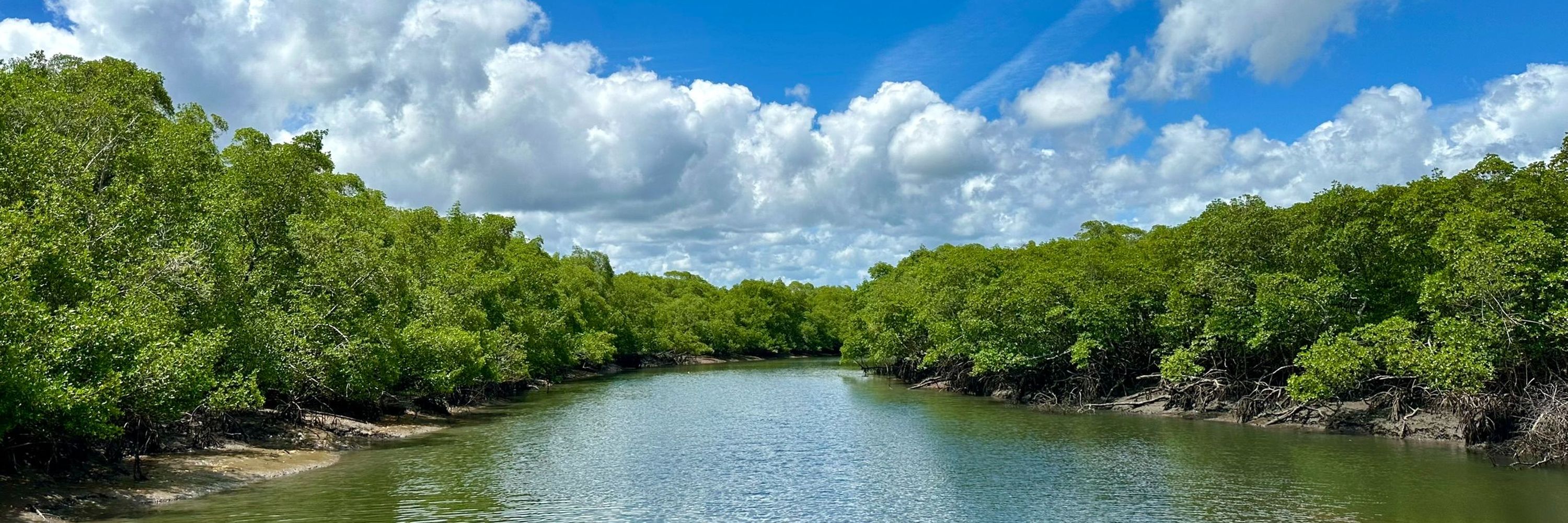
Alex Cabral
@acabral.bsky.social
🎓 Assistant Professor at Trinity College Dublin
🌊 Groundwater pathways connecting land and sea
🧪 Isotope tracers • Carbon fluxes • GHG emissions
🌎 Climate change and water quality resilience
🌊 Groundwater pathways connecting land and sea
🧪 Isotope tracers • Carbon fluxes • GHG emissions
🌎 Climate change and water quality resilience
Pinned
Alex Cabral
@acabral.bsky.social
· Apr 3


🌿 Pristine mangroves absorb nitrous oxide (N2O), offsetting up to 71% of methane (CH4) emissions.
🌎 Global N2O uptake may compensate one-third of aquatic CH4 emissions.
aslopubs.onlinelibrary.wiley.com/doi/full/10....
@aslo.org @barefootlab.bsky.social @biogeoste.bsky.social
#ASLO_Letters
🌎 Global N2O uptake may compensate one-third of aquatic CH4 emissions.
aslopubs.onlinelibrary.wiley.com/doi/full/10....
@aslo.org @barefootlab.bsky.social @biogeoste.bsky.social
#ASLO_Letters
Reposted by Alex Cabral
Earth’s silicate weathering continuum www.nature.com/articles/s41... #jcampubs 🌊

Earth’s silicate weathering continuum - Nature Geoscience
Chemical weathering of silicate rocks occurs along a continuum from terrestrial to marine environments.
www.nature.com
August 11, 2025 at 4:31 PM
Earth’s silicate weathering continuum www.nature.com/articles/s41... #jcampubs 🌊
Reposted by Alex Cabral
Upcoming workshop (September) - Marine Benthic Calcifiers and Their Contribution to the Oceanic Carbon Cycle
Stay tuned — full program & registration coming early September!
maf-world.eu/events/save-...
Stay tuned — full program & registration coming early September!
maf-world.eu/events/save-...

July 25, 2025 at 10:12 AM
Upcoming workshop (September) - Marine Benthic Calcifiers and Their Contribution to the Oceanic Carbon Cycle
Stay tuned — full program & registration coming early September!
maf-world.eu/events/save-...
Stay tuned — full program & registration coming early September!
maf-world.eu/events/save-...
Reposted by Alex Cabral
🇨🇭The #ETH in #Zürich is looking for an Assistant Professor in #Soil (Bio-/Geo-) Chemistry!
Deadline to apply is September 30th!
Please Share!
#AcademicSky #Biochemistry #biogeochemistry #soilscience
ethz.ch/en/the-eth-z...
Deadline to apply is September 30th!
Please Share!
#AcademicSky #Biochemistry #biogeochemistry #soilscience
ethz.ch/en/the-eth-z...
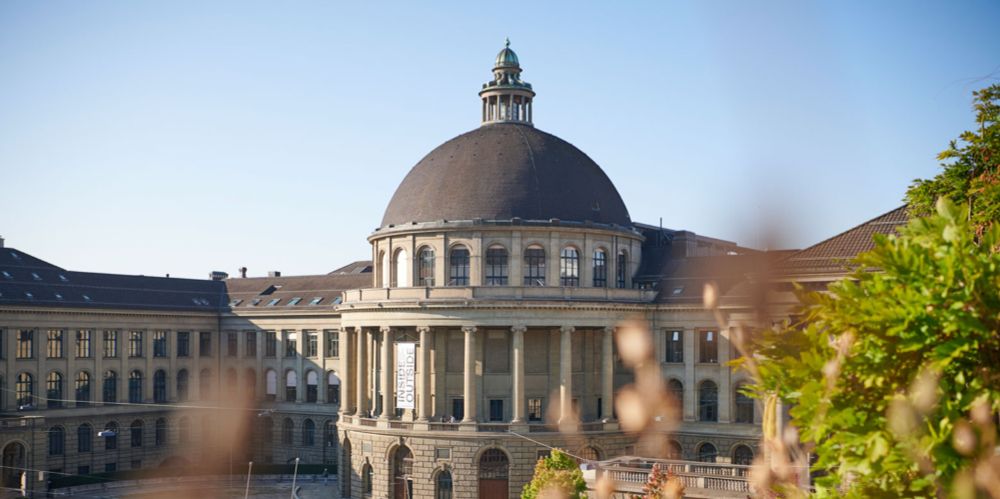
Assistant Professor (Tenure Track) of Soil Chemistry
ethz.ch
July 12, 2025 at 1:03 PM
🇨🇭The #ETH in #Zürich is looking for an Assistant Professor in #Soil (Bio-/Geo-) Chemistry!
Deadline to apply is September 30th!
Please Share!
#AcademicSky #Biochemistry #biogeochemistry #soilscience
ethz.ch/en/the-eth-z...
Deadline to apply is September 30th!
Please Share!
#AcademicSky #Biochemistry #biogeochemistry #soilscience
ethz.ch/en/the-eth-z...
Reposted by Alex Cabral
Pleased to share our new publication in @aslo.org L&O!
We used #radium-224 to quantify vertical mixing and benthic silicate fluxes across the #Baltic Sea.
Read more here (fully open access): doi.org/10.1002/lno....
With (and others):
@barefootlab.bsky.social @biogeoste.bsky.social
We used #radium-224 to quantify vertical mixing and benthic silicate fluxes across the #Baltic Sea.
Read more here (fully open access): doi.org/10.1002/lno....
With (and others):
@barefootlab.bsky.social @biogeoste.bsky.social

Radium isotopes quantify vertical mixing and reveal large benthic silicate fluxes in anoxic deep waters
Benthic fluxes are important sources of nutrients and dissolved carbon to the water column. Yet, most approaches for quantifying benthic fluxes are labor intensive and cover relatively small areas of...
doi.org
July 9, 2025 at 12:53 PM
Pleased to share our new publication in @aslo.org L&O!
We used #radium-224 to quantify vertical mixing and benthic silicate fluxes across the #Baltic Sea.
Read more here (fully open access): doi.org/10.1002/lno....
With (and others):
@barefootlab.bsky.social @biogeoste.bsky.social
We used #radium-224 to quantify vertical mixing and benthic silicate fluxes across the #Baltic Sea.
Read more here (fully open access): doi.org/10.1002/lno....
With (and others):
@barefootlab.bsky.social @biogeoste.bsky.social
Reposted by Alex Cabral
⚒️ Article: The proportion of carbon, nitrogen, and phosphorus in the ocean now substantially differs from the Redfield ratio, likely reflecting a reduction in phosphorus limitation
www.nature.com/articles/s41...
www.nature.com/articles/s41...

July 3, 2025 at 3:00 PM
⚒️ Article: The proportion of carbon, nitrogen, and phosphorus in the ocean now substantially differs from the Redfield ratio, likely reflecting a reduction in phosphorus limitation
www.nature.com/articles/s41...
www.nature.com/articles/s41...
Reposted by Alex Cabral
We are hiring!
The School of Natural Sciences in Trinity College Dublin is seeking to appoint a tenure-track Assistant Professor in Environmental Science.
Apply here: my.corehr.com/pls/trrecrui..., and under 'Department', scroll to The School of Natural Sciences. Deadline: August 15th.
The School of Natural Sciences in Trinity College Dublin is seeking to appoint a tenure-track Assistant Professor in Environmental Science.
Apply here: my.corehr.com/pls/trrecrui..., and under 'Department', scroll to The School of Natural Sciences. Deadline: August 15th.
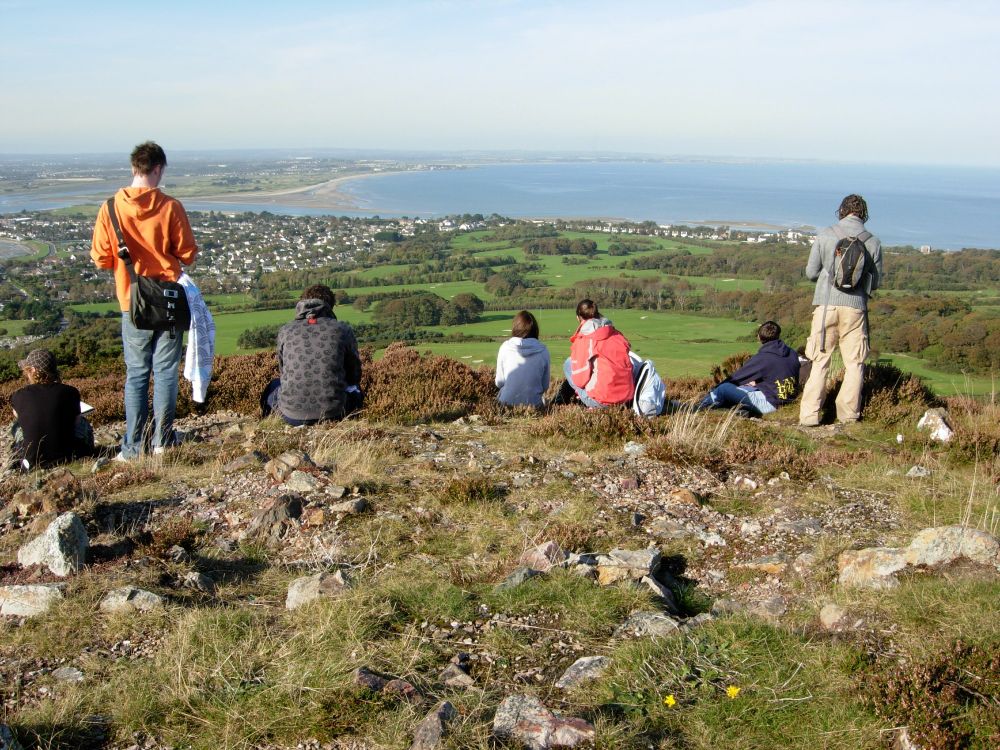
July 4, 2025 at 1:44 PM
We are hiring!
The School of Natural Sciences in Trinity College Dublin is seeking to appoint a tenure-track Assistant Professor in Environmental Science.
Apply here: my.corehr.com/pls/trrecrui..., and under 'Department', scroll to The School of Natural Sciences. Deadline: August 15th.
The School of Natural Sciences in Trinity College Dublin is seeking to appoint a tenure-track Assistant Professor in Environmental Science.
Apply here: my.corehr.com/pls/trrecrui..., and under 'Department', scroll to The School of Natural Sciences. Deadline: August 15th.
Reposted by Alex Cabral
🚨 PhD in marine biogeochemistry at ICBM (@icbm-uol.bsky.social) and MARUM (@marumunibremen.bsky.social) 🌊
Study DOM–metal interactions, and go on research cruises!
Project: www.marum.de/en/The-Ocean...
Apply: www.uni-bremen.de/universitaet...
#phd #DOM #deepsea
Study DOM–metal interactions, and go on research cruises!
Project: www.marum.de/en/The-Ocean...
Apply: www.uni-bremen.de/universitaet...
#phd #DOM #deepsea
EXC1-12 Deep-sea natural petroleum seeps and hydrothermal systems as sources of marine recalcitrant dissolved organic matter
www.marum.de
July 4, 2025 at 1:19 PM
🚨 PhD in marine biogeochemistry at ICBM (@icbm-uol.bsky.social) and MARUM (@marumunibremen.bsky.social) 🌊
Study DOM–metal interactions, and go on research cruises!
Project: www.marum.de/en/The-Ocean...
Apply: www.uni-bremen.de/universitaet...
#phd #DOM #deepsea
Study DOM–metal interactions, and go on research cruises!
Project: www.marum.de/en/The-Ocean...
Apply: www.uni-bremen.de/universitaet...
#phd #DOM #deepsea
Reposted by Alex Cabral
PhD scholarship available in modelling water quality NbS measures. info here earthandplanetary.wordpress.com/2025/06/19/p...
earthandplanetary.wordpress.com
June 21, 2025 at 11:21 AM
PhD scholarship available in modelling water quality NbS measures. info here earthandplanetary.wordpress.com/2025/06/19/p...
Reposted by Alex Cabral
🚨 Happy to have contributed to the report:
" The State of the World's Salt marshes"
www.wwf.org.uk/our-reports/...
👉 Salt marshes have been lost to a crazy extend and this continue (0.28% per year).
👉~ 2 millions hectares could be restored
" The State of the World's Salt marshes"
www.wwf.org.uk/our-reports/...
👉 Salt marshes have been lost to a crazy extend and this continue (0.28% per year).
👉~ 2 millions hectares could be restored

June 17, 2025 at 4:36 PM
🚨 Happy to have contributed to the report:
" The State of the World's Salt marshes"
www.wwf.org.uk/our-reports/...
👉 Salt marshes have been lost to a crazy extend and this continue (0.28% per year).
👉~ 2 millions hectares could be restored
" The State of the World's Salt marshes"
www.wwf.org.uk/our-reports/...
👉 Salt marshes have been lost to a crazy extend and this continue (0.28% per year).
👉~ 2 millions hectares could be restored
Reposted by Alex Cabral
Wrapping up your PhD? I’m planning to hire a postdoc in the next few months (start date flexible). Will start formally advertising soon, but you heard it here first!! Possible research topics include - critical zone hydrology, agricultural water quality, SW-GW interactions. Reach out if interested!
June 6, 2025 at 7:02 PM
Wrapping up your PhD? I’m planning to hire a postdoc in the next few months (start date flexible). Will start formally advertising soon, but you heard it here first!! Possible research topics include - critical zone hydrology, agricultural water quality, SW-GW interactions. Reach out if interested!
Reposted by Alex Cabral
🌊 Registration now open for the GEOTRACES summer school.
📅 17-21 November | Cape Town
🎓Training in marine biogeochemistry of trace elements and isotopes for 36 students
Applications close 30 June 2025
geotraces-2025.sciencesconf.org
📅 17-21 November | Cape Town
🎓Training in marine biogeochemistry of trace elements and isotopes for 36 students
Applications close 30 June 2025
geotraces-2025.sciencesconf.org

May 27, 2025 at 3:12 PM
🌊 Registration now open for the GEOTRACES summer school.
📅 17-21 November | Cape Town
🎓Training in marine biogeochemistry of trace elements and isotopes for 36 students
Applications close 30 June 2025
geotraces-2025.sciencesconf.org
📅 17-21 November | Cape Town
🎓Training in marine biogeochemistry of trace elements and isotopes for 36 students
Applications close 30 June 2025
geotraces-2025.sciencesconf.org
Reposted by Alex Cabral
Delighted to share our paper on developing a catchment-level indicator for subsurface nutrient export risk. It focuses on how nutrients from areas not well connected via surface waters (eg, rivers) can reach the sea through subsurface pathways, framed in the context of the #BalticSea

Land Meets Sea: Towards the Development and Application of an Indicator to Assess Subsurface Nutrient Export Risk from Disconnected Coastal Catchments to the Sea - Estuaries and Coasts
The land along the coast is often hydrologically disconnected from the prevailing river systems. Water flow and nutrient transport from these disconnected coastal subcatchments follow diffusive pathwa...
link.springer.com
June 7, 2025 at 7:50 PM
Delighted to share our paper on developing a catchment-level indicator for subsurface nutrient export risk. It focuses on how nutrients from areas not well connected via surface waters (eg, rivers) can reach the sea through subsurface pathways, framed in the context of the #BalticSea
Reposted by Alex Cabral
New paper! led by Josh Dean “Old carbon routed from land to the atmosphere by global river systems”
doi.org/10.1038/s415...
#radiocarbon in #rivers reveals the age of CO2 they release to the atmosphere.
An active leak of old carbon from land.
🧪⚒️
@joshfdean.bsky.social @oxuniearthsci.bsky.social
doi.org/10.1038/s415...
#radiocarbon in #rivers reveals the age of CO2 they release to the atmosphere.
An active leak of old carbon from land.
🧪⚒️
@joshfdean.bsky.social @oxuniearthsci.bsky.social
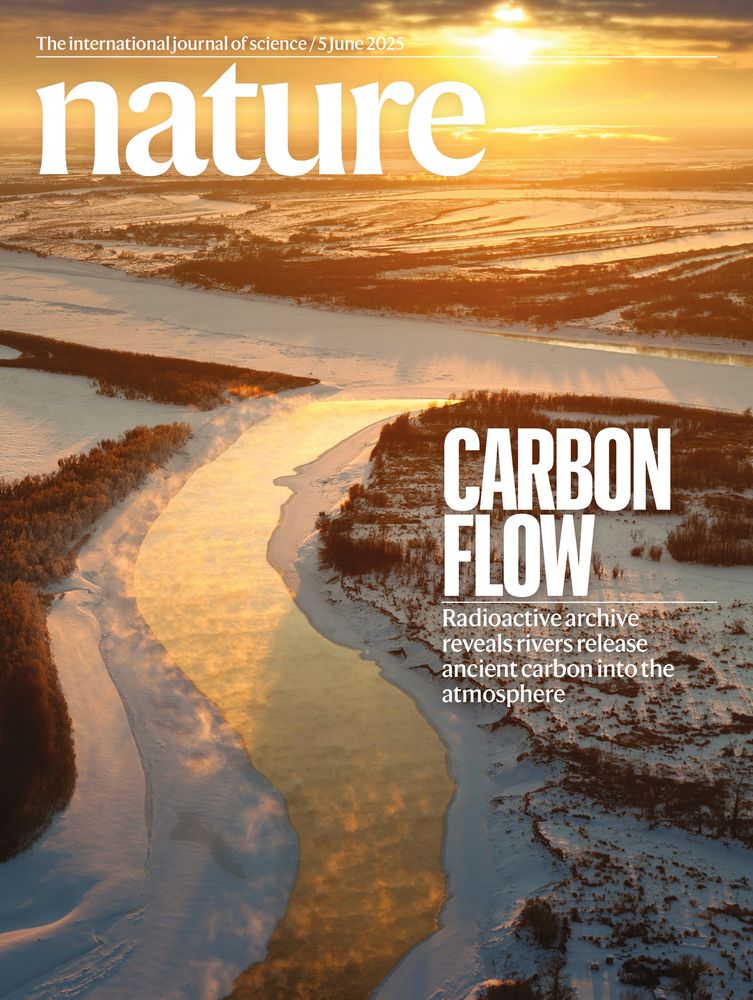
June 4, 2025 at 3:27 PM
New paper! led by Josh Dean “Old carbon routed from land to the atmosphere by global river systems”
doi.org/10.1038/s415...
#radiocarbon in #rivers reveals the age of CO2 they release to the atmosphere.
An active leak of old carbon from land.
🧪⚒️
@joshfdean.bsky.social @oxuniearthsci.bsky.social
doi.org/10.1038/s415...
#radiocarbon in #rivers reveals the age of CO2 they release to the atmosphere.
An active leak of old carbon from land.
🧪⚒️
@joshfdean.bsky.social @oxuniearthsci.bsky.social
Reposted by Alex Cabral
No advert out yet, but I will recruiting a 2yr postdoc, start date autumn 2025, at @livunigeog.bsky.social soon. Lowland and upland peatlands, GHGs, DOM and water chemistry. Plenty of fieldwork. Feel free to drop me a DM or email if you might be interested, and please spread the word.
June 5, 2025 at 12:32 PM
No advert out yet, but I will recruiting a 2yr postdoc, start date autumn 2025, at @livunigeog.bsky.social soon. Lowland and upland peatlands, GHGs, DOM and water chemistry. Plenty of fieldwork. Feel free to drop me a DM or email if you might be interested, and please spread the word.
Reposted by Alex Cabral
Paper out! 📣📣
Environmental Gradients, Not Geographic Boundaries, Structure Meiofaunal Communities in Siberian Seas 🌊🪱🪱
#Arctic #Biogeochemistry #Meiofauna #Sediment
📰 Full text: onlinelibrary.wiley.com/doi/10.1002/...
🤝@naturvetenskap.bsky.social @balticseacentre.bsky.social and others...
Environmental Gradients, Not Geographic Boundaries, Structure Meiofaunal Communities in Siberian Seas 🌊🪱🪱
#Arctic #Biogeochemistry #Meiofauna #Sediment
📰 Full text: onlinelibrary.wiley.com/doi/10.1002/...
🤝@naturvetenskap.bsky.social @balticseacentre.bsky.social and others...

Environmental Gradients, Not Geographic Boundaries, Structure Meiofaunal Communities in Siberian Seas
This study uses sediment eDNA metabarcoding to assess the diversity and distribution of meiofauna in Siberian seas, marking the first application of this technique in the region. Our results reveal t....
onlinelibrary.wiley.com
May 26, 2025 at 7:23 AM
Paper out! 📣📣
Environmental Gradients, Not Geographic Boundaries, Structure Meiofaunal Communities in Siberian Seas 🌊🪱🪱
#Arctic #Biogeochemistry #Meiofauna #Sediment
📰 Full text: onlinelibrary.wiley.com/doi/10.1002/...
🤝@naturvetenskap.bsky.social @balticseacentre.bsky.social and others...
Environmental Gradients, Not Geographic Boundaries, Structure Meiofaunal Communities in Siberian Seas 🌊🪱🪱
#Arctic #Biogeochemistry #Meiofauna #Sediment
📰 Full text: onlinelibrary.wiley.com/doi/10.1002/...
🤝@naturvetenskap.bsky.social @balticseacentre.bsky.social and others...
Reposted by Alex Cabral
One week to get your applications in for our Blue Carbon Canada positions! Come join a collegial productive team with @taragmartin.bsky.social Sara Knox, Mary O’Connor, Graham Clark, me and our stellar set of PDFs and grad students! 🇨🇦 🌊 #dreamteam
We're Hiring for 8 Positions!! Interested in conducting research on nature based solutions in Canada's coastal ecosystems? Blue Carbon Canada is recruiting 3 PDFs & 5 PhD students for Sept. 2025 in partnership w @wwfcanada.org www.bluecarboncanada.ca/were-recruit... Open to int'l scholars Pls repost

We're Recruiting! — Blue Carbon Canada
www.bluecarboncanada.ca
April 23, 2025 at 3:35 PM
One week to get your applications in for our Blue Carbon Canada positions! Come join a collegial productive team with @taragmartin.bsky.social Sara Knox, Mary O’Connor, Graham Clark, me and our stellar set of PDFs and grad students! 🇨🇦 🌊 #dreamteam
Reposted by Alex Cabral
🌊 Do you work with fjord sediments?
Then join us at #22ISC for the session: “Fjord sediments: Archives of climate and tectonics through time”
📍 Wellington, Aotearoa New Zealand
📅 25–30 January 2026
🌐 Session: tinyurl.com/fjordISC2026
@coastalcarbon.bsky.social @sedimentology.bsky.social
Then join us at #22ISC for the session: “Fjord sediments: Archives of climate and tectonics through time”
📍 Wellington, Aotearoa New Zealand
📅 25–30 January 2026
🌐 Session: tinyurl.com/fjordISC2026
@coastalcarbon.bsky.social @sedimentology.bsky.social
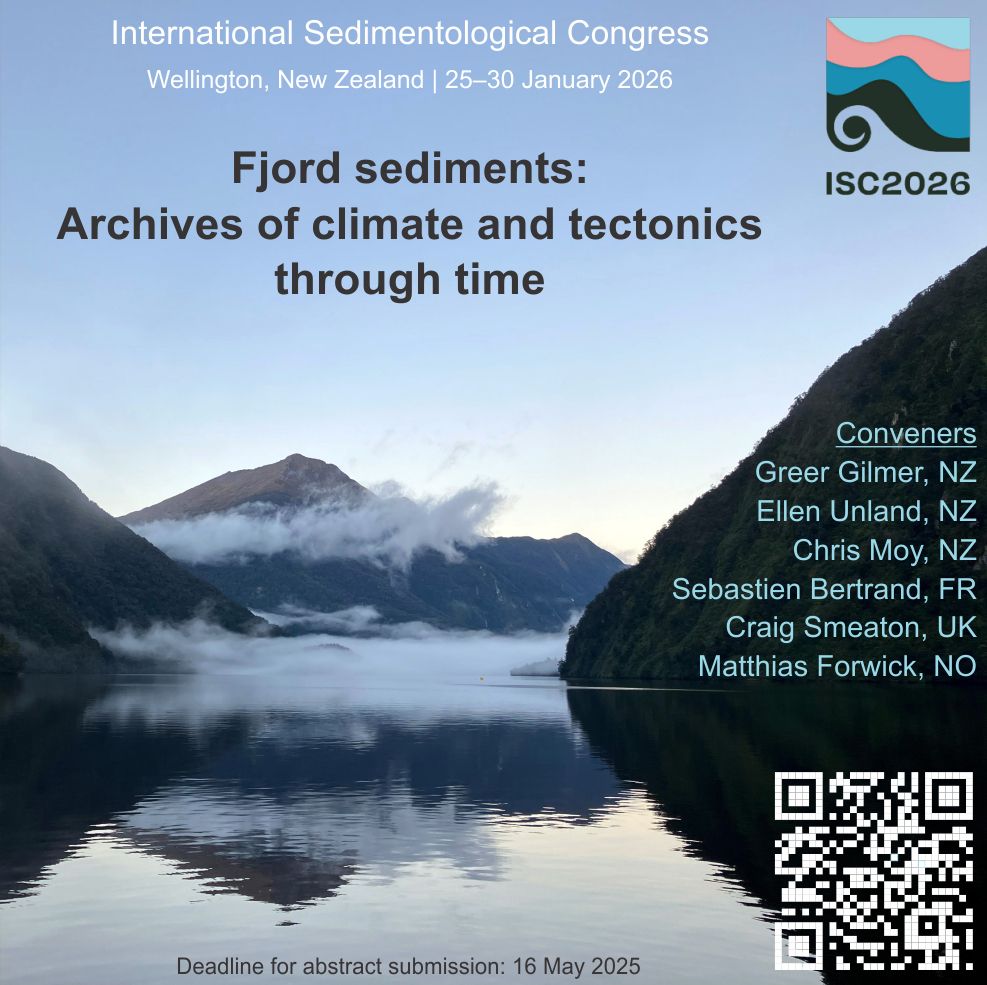
April 24, 2025 at 10:40 AM
🌊 Do you work with fjord sediments?
Then join us at #22ISC for the session: “Fjord sediments: Archives of climate and tectonics through time”
📍 Wellington, Aotearoa New Zealand
📅 25–30 January 2026
🌐 Session: tinyurl.com/fjordISC2026
@coastalcarbon.bsky.social @sedimentology.bsky.social
Then join us at #22ISC for the session: “Fjord sediments: Archives of climate and tectonics through time”
📍 Wellington, Aotearoa New Zealand
📅 25–30 January 2026
🌐 Session: tinyurl.com/fjordISC2026
@coastalcarbon.bsky.social @sedimentology.bsky.social
Reposted by Alex Cabral
Adding alkalinity to the ocean might enable it to take up more atmospheric CO₂, but much more research in laboratories, mesocosms, and field studies is needed before considering full-scale deployment. I have some thoughts in this piece. 🌊

Oceans as climate change allies
Can climate catastrophe be stymied by tweaking seawater chemistry?
cen.acs.org
April 11, 2025 at 7:11 PM
Adding alkalinity to the ocean might enable it to take up more atmospheric CO₂, but much more research in laboratories, mesocosms, and field studies is needed before considering full-scale deployment. I have some thoughts in this piece. 🌊
Reposted by Alex Cabral
@standrewssgsd.bsky.social has a new two week Blue Carbon Summer School happening between the 29th June and the 12th of July. Over the two weeks you will be introduced to field, lab and digital skills to undertake blue carbon research.
Full details -
tinyurl.com/yeyrbbm5
Full details -
tinyurl.com/yeyrbbm5


April 10, 2025 at 7:27 PM
@standrewssgsd.bsky.social has a new two week Blue Carbon Summer School happening between the 29th June and the 12th of July. Over the two weeks you will be introduced to field, lab and digital skills to undertake blue carbon research.
Full details -
tinyurl.com/yeyrbbm5
Full details -
tinyurl.com/yeyrbbm5
Reposted by Alex Cabral
🧪 Nutrient pollution in Europe’s lagoons has triggered great nitrous oxide (N2O) emissions 🫧
🌎 Globally, emission from lagoons is higher than previously estimated 📈
Check is out in @jgrbiogeo.bsky.social
🔗: doi.org/10.1029/2024...
🤝 @biogeoste.bsky.social @barefootlab.bsky.social
🌎 Globally, emission from lagoons is higher than previously estimated 📈
Check is out in @jgrbiogeo.bsky.social
🔗: doi.org/10.1029/2024...
🤝 @biogeoste.bsky.social @barefootlab.bsky.social


April 7, 2025 at 9:11 AM
🧪 Nutrient pollution in Europe’s lagoons has triggered great nitrous oxide (N2O) emissions 🫧
🌎 Globally, emission from lagoons is higher than previously estimated 📈
Check is out in @jgrbiogeo.bsky.social
🔗: doi.org/10.1029/2024...
🤝 @biogeoste.bsky.social @barefootlab.bsky.social
🌎 Globally, emission from lagoons is higher than previously estimated 📈
Check is out in @jgrbiogeo.bsky.social
🔗: doi.org/10.1029/2024...
🤝 @biogeoste.bsky.social @barefootlab.bsky.social
Reposted by Alex Cabral
A mangrove nitrous oxide sink attenuates methane climate impacts aslopubs.onlinelibrary.wiley.com/doi/10.1002/... #jcampubs
April 4, 2025 at 1:36 PM
A mangrove nitrous oxide sink attenuates methane climate impacts aslopubs.onlinelibrary.wiley.com/doi/10.1002/... #jcampubs
Reposted by Alex Cabral
#Nitrogen paper out! 🌊🌊🌊
Global lagoons emit more N2O than we thought!
agupubs.onlinelibrary.wiley.com/doi/full/10....
The 2nd PhD paper by @hlscheung.bsky.social with a great team @barefootlab.bsky.social, etc. is out now in @jgrbiogeo.bsky.social @agu.org
Global lagoons emit more N2O than we thought!
agupubs.onlinelibrary.wiley.com/doi/full/10....
The 2nd PhD paper by @hlscheung.bsky.social with a great team @barefootlab.bsky.social, etc. is out now in @jgrbiogeo.bsky.social @agu.org
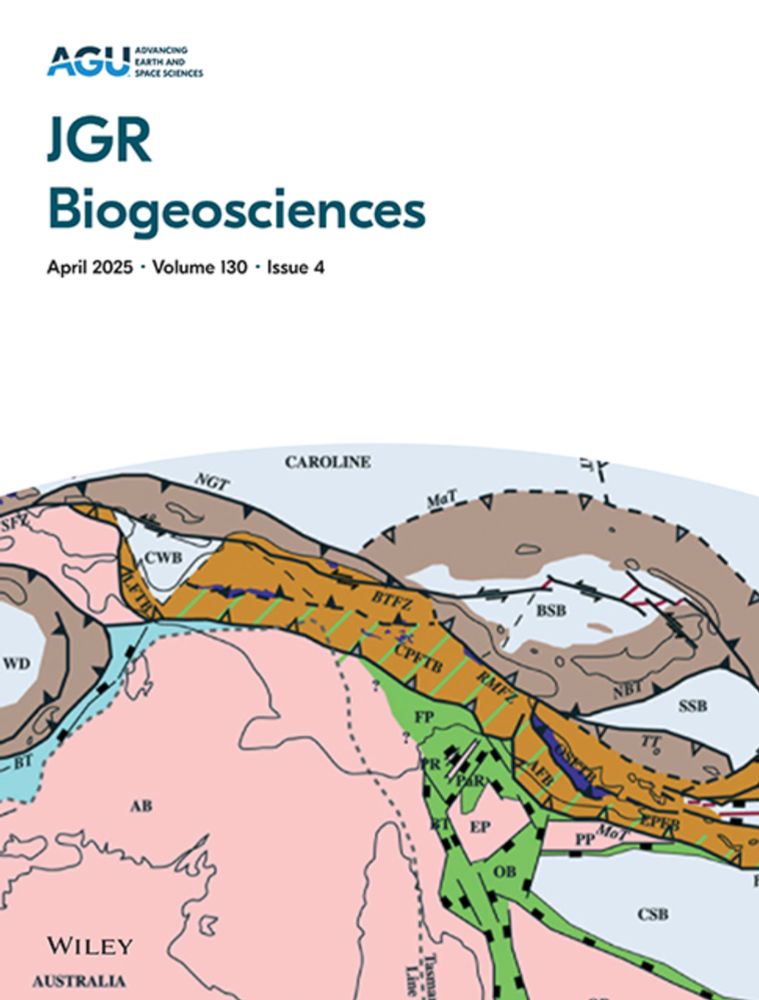
Nitrate‐Driven Eutrophication Supports High Nitrous Oxide Production and Emission in Coastal Lagoons
Eutrophication stimulates nitrous oxide emissions in coastal lagoons Excess nitrate induces incomplete denitrification, leading to high nitrous oxide effluxes in sediments Nitrous oxide emission...
agupubs.onlinelibrary.wiley.com
April 4, 2025 at 7:03 AM
#Nitrogen paper out! 🌊🌊🌊
Global lagoons emit more N2O than we thought!
agupubs.onlinelibrary.wiley.com/doi/full/10....
The 2nd PhD paper by @hlscheung.bsky.social with a great team @barefootlab.bsky.social, etc. is out now in @jgrbiogeo.bsky.social @agu.org
Global lagoons emit more N2O than we thought!
agupubs.onlinelibrary.wiley.com/doi/full/10....
The 2nd PhD paper by @hlscheung.bsky.social with a great team @barefootlab.bsky.social, etc. is out now in @jgrbiogeo.bsky.social @agu.org
🌿 Pristine mangroves absorb nitrous oxide (N2O), offsetting up to 71% of methane (CH4) emissions.
🌎 Global N2O uptake may compensate one-third of aquatic CH4 emissions.
aslopubs.onlinelibrary.wiley.com/doi/full/10....
@aslo.org @barefootlab.bsky.social @biogeoste.bsky.social
#ASLO_Letters
🌎 Global N2O uptake may compensate one-third of aquatic CH4 emissions.
aslopubs.onlinelibrary.wiley.com/doi/full/10....
@aslo.org @barefootlab.bsky.social @biogeoste.bsky.social
#ASLO_Letters


April 3, 2025 at 12:45 PM
🌿 Pristine mangroves absorb nitrous oxide (N2O), offsetting up to 71% of methane (CH4) emissions.
🌎 Global N2O uptake may compensate one-third of aquatic CH4 emissions.
aslopubs.onlinelibrary.wiley.com/doi/full/10....
@aslo.org @barefootlab.bsky.social @biogeoste.bsky.social
#ASLO_Letters
🌎 Global N2O uptake may compensate one-third of aquatic CH4 emissions.
aslopubs.onlinelibrary.wiley.com/doi/full/10....
@aslo.org @barefootlab.bsky.social @biogeoste.bsky.social
#ASLO_Letters
Reposted by Alex Cabral
We are hiring a postdoc at Umeå University in aquatic ecosystem ecology. See the link for details!
www.umu.se/en/work-with...
@grocherros.bsky.social
www.umu.se/en/work-with...
@grocherros.bsky.social

Postdoc (2 years) in aquatic ecosystem ecology
www.umu.se
March 5, 2025 at 10:21 AM
We are hiring a postdoc at Umeå University in aquatic ecosystem ecology. See the link for details!
www.umu.se/en/work-with...
@grocherros.bsky.social
www.umu.se/en/work-with...
@grocherros.bsky.social
Reposted by Alex Cabral
My last PhD chapter is out!
Combined GHG fluxes reveal a net carbon sink across a glacier-ocean continuum — glacier exports CH₄ to coastal waters, but strong CO₂ uptake outweighs GHG emissions. 🌊❄️
Read more: agupubs.onlinelibrary.wiley.com/doi/full/10....
Combined GHG fluxes reveal a net carbon sink across a glacier-ocean continuum — glacier exports CH₄ to coastal waters, but strong CO₂ uptake outweighs GHG emissions. 🌊❄️
Read more: agupubs.onlinelibrary.wiley.com/doi/full/10....
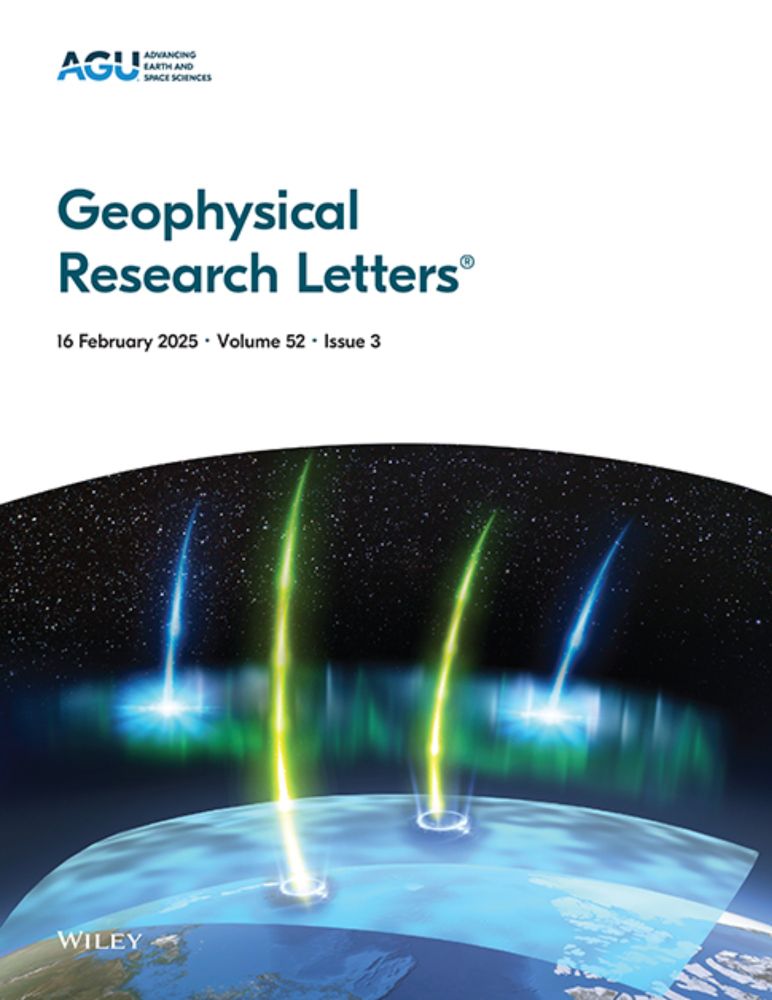
Combined CH4, N2O, and CO2 Fluxes Reveal a Net Carbon Sink Across a Glacier‐Ocean Continuum
A rapidly-retreating marine-terminating glacier exported CH4 to nearshore waters N2O was undersaturated near the glacier front The regional CO2 sink greatly outweighs CH4 and N2O emissions
agupubs.onlinelibrary.wiley.com
February 18, 2025 at 9:06 AM
My last PhD chapter is out!
Combined GHG fluxes reveal a net carbon sink across a glacier-ocean continuum — glacier exports CH₄ to coastal waters, but strong CO₂ uptake outweighs GHG emissions. 🌊❄️
Read more: agupubs.onlinelibrary.wiley.com/doi/full/10....
Combined GHG fluxes reveal a net carbon sink across a glacier-ocean continuum — glacier exports CH₄ to coastal waters, but strong CO₂ uptake outweighs GHG emissions. 🌊❄️
Read more: agupubs.onlinelibrary.wiley.com/doi/full/10....

